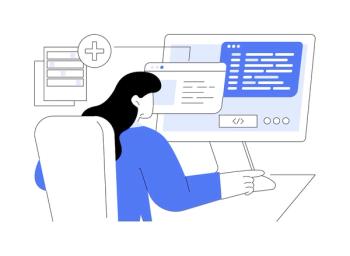
Why do we keep prescribing heroin to patients?
Let us all remember when the pen hits the prescription pad to write for an opioid that heroin is an opioid, too.
In order to
RELATED READING:
Opium was the first opioid, derived from the sap of opium poppies whose growth and cultivation dates back to 3400 BC. In the 18th century, physicians in the U.S. used opium for multiple ailments. Toward the end of the 18th century, the addictive qualities of opium became apparent, as well as the need for an alternative.
In 1805, morphine and codeine were isolated from opium, and morphine was subsequently touted as a cure for opium addiction. Morphine’s use increased in popularity as it has about 10 times more euphoric effects than the equivalent amount of opium. As with opium, morphine’s addictive nature became obvious as well as the need for continued research for alternative medications.
Are you starting to see a pattern yet?
Heroin was first synthesized from morphine in 1874 and then made commercially available in 1898 by the Bayer Pharmaceutical Company. Considered a miracle drug, it was used to treat headaches, colds and other common ailments. Heroin, ironically, was given to active morphine and codeine addicts as an alternative to-and as a solution for-their addiction. The unrestricted distribution of heroin led to an astronomical number of addicts and a resulting rising crime rate.
FURTHER READING:
As legal and mental health concerns began to grow throughout the United States, authorities took note and ultimately banned its manufacture and distribution in 1924, just three decades after its introduction.
Since heroin, the “miracle drug,” was no longer a medical option, physicians reverted to prescribing morphine and codeine for pain and other conditions. Pharmaceutical companies went to work and developed other synthetic opioids as potent and addictive as heroin. Some of the synthetic drugs created were OxyContin, Vicodin and Percocet.
BLOG:
Over the last 10 years, prescriptions for these medications has tripled. In a country of 311 million people, there were 219 million opioid prescriptions written in 2011 alone. Just because heroin was banned does not mean that the currently available opioids are any less addictive or potent. On the contrary, the potency of synthetic opioids has increased dramatically.
We are now learning through pharmacogenetics that some individuals are genetically predisposed to opioid addiction just as they are with alcohol. It may not be cost effective to screen everyone for this addictive potential; however, patients should be warned of the mental, physical and potentially life changing consequences of taking opioids.
Studies report a wide range in the percentage of patients who become dependent on prescription opioids. Findings appear to vary based on how use is monitored, the condition requiring the prescription, the specific form of opioid and the prescribed dosage. In some cases, the rate of addiction has been reported as high as 30%. Four out of five new heroin users started out misusing prescription painkillers. As a consequence, the rate of heroin overdose deaths nearly quadrupled from 2000 to 2014.
TRENDING:
Fifty years ago, the typical heroin addict was a poor teenage boy in the inner city. Now, 75% of the almost three million opioid addicts are middle class, young suburban twenty-somethings and middle-aged individuals who started with legally prescribed opioids, became addicted and then turned to heroin as a cheaper alternative.
So how do we begin to address these opioid prescribing issues?
· Incentive payments from Medicare to hospitals based on a patients’ self-evaluation of their pain must end. There is no doubt that this incentive program has led to the over treatment of acute pain in the hospital setting as well as lax prescribing practices in emergency departments across the country.
· Non-opioid medications and alternative therapies should be used first, with opioids saved as a last resort.
· Educating patients that pain is a normal result of injury or recovery from surgery and that the expectation of being treated with opioids to achieve a painless state is not only unrealistic, but can be life threatening.
MORE FROM DR. GART:
· Educating primary care physicians that even small quantities of opioids prescribed for minor injuries increases the risk of long-term use.
· Educating specialists that opioids prescribed for hip, knee and back pain results in worse pain after surgery and the increased likelihood of long term opioid use compared to those not taking opioids prior to surgery.
Lastly, let us all remember when the pen hits the prescription pad to write for an opioid that heroin is an opioid, too!
Myles Gart, MD
Gart is a practicing anesthesiologist at Faith Regional Health System in Norfolk, Nebraska.
Newsletter
Stay informed and empowered with Medical Economics enewsletter, delivering expert insights, financial strategies, practice management tips and technology trends — tailored for today’s physicians.








